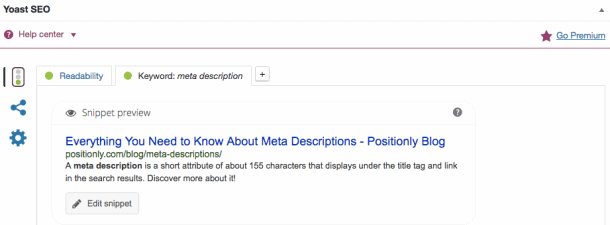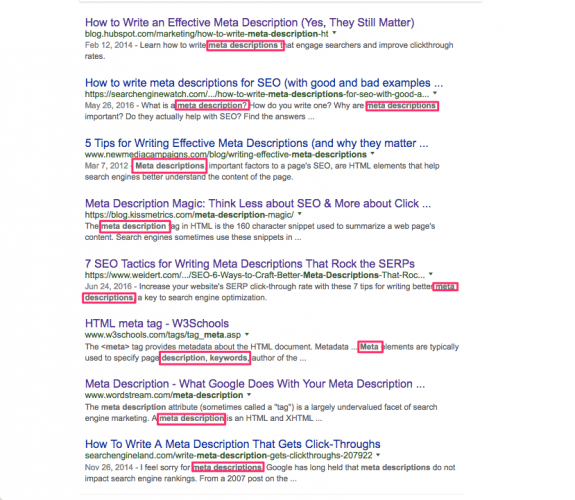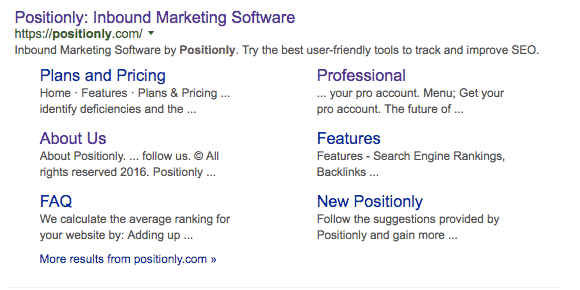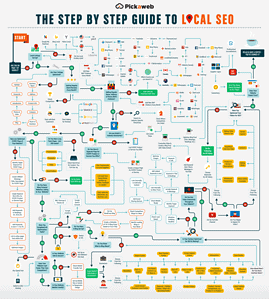Websites can be one of the greatest tools for a business online. But, if you go down a path that is not a good match for your goals and budget, it can be an expensive and time-consuming headache. Purchasing a website design service can be tricky, simply because sometimes you don’t know what you don’t know and that can make it harder to ask the right questions. To help you out and get you oriented, we have written this awesome article about what you need to know before choosing a website design company.
1. Is the website design company established and experienced?
It’s important to find a website design company that has experience. You can measure this in years running their business, number of clients served and also through the quality of their web design portfolio.
Years in business indicates that the web design company is stable, is successful in running a business, and that they will be able to competently work with your business for long term results as they have done for their own. The number of clients served indicates that the company should be very familiar with the full spectrum of website projects and business verticals and won’t take on a project that they don’t have the experience in completing. It also indicates that they have had the opportunity to iron out their work processes and are familiar with, and are able to execute, deadlines and timeframes.
Three questions to ask are:
- How long has the company been designing and developing websites?
- How many clients do they have?
- How many employees do they have?
In order to try and save a tiny bit of money there is often a temptation to get your website designed and developed by a new company, a freelancer or a friend of a friends nephew that’s just graduated from college. Often freelancers and small-time developers just don’t have the experience they thought they did and what seemed like a money-saver can become an expensive repair job as you will more often than not need to start from scratch again. We have heard these unfortunate tales time and time again and we have found that going with inexperienced or cheaper companies and freelancers is often a short-term approach for ultimately what is a long-term project. Realistically, a website is an ongoing project and it is important to partner with an experienced and established company that will be there for the long haul, that has the experience to offer you ongoing support and advise and that is focused on creating a quality product for you.
2. What should I expect to pay?
A question we often hear is – “how much should I really pay for a website?”
Website prices can range a lot. You can get a website designed for as little as almost nothing and just pay for hosting, or the price can go all the way through to $35,000 and beyond. One of the interesting things about the web design industry is that you can get quoted a considerably different amount for the same job depending on the company that is quoting you.
As is the case when looking to purchase anything, there is a temptation to go with the cheapest option. You can buy website design services from between $300-$1100, however it is important that you understand what you are purchasing as these cheaper services always have limitations. Another important thing to consider with these cheaper products is that they are often out-of-the-box solutions and you won’t get the consultation and customization that can be critical so that the website is best serving your business interests. These cheap options can still work for some people, but not for all.
To a large degree the saying “you get what you pay for” holds true in the web design industry. However, there is a point where the price just keeps going up and the quality of the work or expertise doesn’t justify the cost.
Obviously price is dependent on the specific functionality that you require, but if you have a budget of between $3000 – $10,000, and if you follow the points in this article when selecting a web design company for you, you should be able to get a professionally designed and developed website for your business or project.
The best way to look a website is as an investment in your business. In retrospect, many web designers feel the same as they are investing their time into creating, managing and finishing a project they would like to see be a success. If you are prepared to pay a little extra, do a little research and choose the right design company, your website can be an asset and money making tool for years to come.
3. Do you have access to update the website content yourself?
Business doesn’t wait. So ask and make sure you will have access to update and edit the content of your website 24/7 on the fly or on your own time. This is most commonly achieved by web-based software called a content management system or CMS. Regardless of whether you intend to edit and upload the content of your website yourself or hire someone internally to do it for you, it’s important that your website is built on a content management system so it’s easy to make changes.
A CMS is considered as best business practice in website development for businesses small and large and has become fairly common these days. It is important to consider as if your website isn’t on a CMS, it can create a lot of expense later on when you’re wanting to change or add content. You also want to make sure that the CMS is an industry standard platform, that it’s easy to use, and that good training and support materials are available to you. WordPress and Joomla are both great examples of CMS platforms that meet these expectations.
4. Will you get support when you need it?
Does the web design company you’re purchasing the website from offer on-going support? If they don’t, this is a huge red flag. When you purchase a website, it is very important that you choose a web design company that offers reliable, generous and cost effective support on an ongoing basis. This is incredibly important as a website has a lot of different functions and aspects to it, and it helps to have professional assistance available when you need it.
Things you might need help with:
- Your emails
- Your domain name
- Your hosting
- How to use the CMS of your website
- eCommerce setup and maintenance
- Other general technical issues
Without quality support, you can find yourself in a predicament where you need to then find a different web developer to fix the problem that you have encountered. This can lead to an extraordinary amount of frustration, wasted time and additional expense on your part.
A story we hear often and our clients have experienced repeatedly is with freelance developers or small web design companies who start working on a project and are fantastic in the beginning, but within 6 to 12 months their enthusiasm and commitment wanes. Often they’ve started a steady job or taken on new projects and then old projects are not as fun to work on, or they don’t have time to work on them anymore. So make sure that the support is in place with a company that has support as a part of their business practice.
5. Keep all of your services in one place
It’s very helpful to be able to simply have one company handle everything that relates to your website and online presence. This is doubly helpful to the web development firm doing the work when troubleshooting any issues. Secondary services are anything that will support your business and your online presence. That could be graphic design services, copywriting, domain names, hosting, support, and, most importantly, online marketing and social media. You want to know that the web company you’re dealing with can offer a full range of services that relate to your website and that they have good, solid marketing skills.
Your website is an investment into the future of your business and it’s going to have a life-cycle of it’s own alongside your business. A website is a long-term project for you and as you develop your business. You will want to make the most out of your online presence using different services to promote your business, as you grow professionally.
6. Are there any additional or hidden charges
When you are purchasing a website and receiving quotes, in addition to getting a fixed project price, it’s important to be aware of any limitations, ongoing charges and costs that may be related to the website.
For Example: web hosting and support fees. It’s very common to pay for hosting on a recurring basis. But, you will also want to know about additional web development costs or future design costs. It’s good to know how much the ballpark design studio rates are per hour to cover your needs. And it’s also important to establish the project scope and prices straight up.
Sometimes without proper management, a design company can allow a project to go out of scope and budget or get delayed due to unexpected challenges. Suddenly you’re in a situation where you’ve invested money in to the project and now it’s more expensive than what was originally quoted. This can also happen because you have decided mid-way that you want more functionality too, but that’s something you should discuss with the design team first as additional charges would likely be expected in that case.
Another thing to consider are the particular limitations of the overall service, for example, limited hosting storage or design revisions. If the company is placing limits on these you can guess there’s a chance that you will be charged extra or experience some technical issues if you exceed these limits.
7. See samples of the work performed in the past
It is important to review and ask for samples of the work and craftsmanship that the web design company has produced in the past. This will give you a good reference point as to what they can provide for you. It’s important in these cases to not only look at the quality of the design, but also the functionality of the websites. Any good web design company should be able to show you a large amount of work that they have done. This will be a very good indication of the service and quality that you’ll receive from their company and it’s a great place to start in terms of evaluating the company.
Along with this, it is also good to review any testimonials or case studies that the company may have from their clients. It is good peace of mind to know that their clients are actually happy with the service that they’ve provided.
8. Keep it American
It’s always great to support and buy American goods and services, however in the web design industry there are a couple of other things to consider above and beyond simply supporting American businesses.
Within the web design industry there is a temptation to outsource development and support to overseas countries to save money, however this is often at the expense of the customer’s experience as there will be time delays and communication issues. And most importantly they just won’t understand you as an American small business.
Having American support and service means that the company you are dealing with will understand you as another American business and should be working in the same business hours as you are. Any problems are more likely to be resolved quickly and easily.
In addition to this, your website will load faster if it is on a server in the United States. Often times, even United States web design businesses use overseas servers which means that your web page needs to travel further when loading which can create a time lag. And out of sheer lack of knowing how to host a website, a web design company may just have bought in to a brand that they feel is a good choice. Feelings and business don’t mix — knowledge of how a business actually functions down to the core is a primary reason a business is successful. This is no different with hosting a website.
9. Are you working with the developer directly or is the company merely providing a turn-key website design service?
Maybe it’s due to the fact that technology is so readily available in this day and age and crafty businesspeople think they can get away with it, or maybe it’s the fact that some companies believe that they can truly be everything to everyone. In any case, there are companies that are out there masquerading as website design companies that don’t even actually do a single line of programming or actual design in-house at all. They outsource. As a matter of fact, they’re merely self-glorified order-takers with catchy buzzwords trying to make a quick dollar. Companies that are primarily print media are notorious for doing this since everyone believes that since they can put out a big production newspaper that they also can put out a big production website. You might as well find a way to set your money on fire, and be prepared to set a lot of it on fire, when dealing with one of these types of false-front companies. And there’s a good chance that the high price tag may just be a high price tag so that the real web design company or the person they’re outsourcing to in another country actually doing the work is paid a reasonable amount for their secrecy and the company selling the work makes an insane margin for generating a sale.
While that may sound fine to some people on paper, in reality what actually happens is your site will need to be updated and will end up breaking at some point due to a change in technology, an update to a CMS (which is notorious with both WordPress and Joomla) or you decide you want additional services and begin tinkering with the settings yourself and get lost. When that happens and you need help from who you bought your services from, you’re going to be at the mercy of whoever they contracted to do the job to still be around as the company who offered the service isn’t going to be able to service the request themselves. Hope, in this case, doesn’t float and you’ll just end up drowning in debt, wasting your time time and losing productivity and sales.
Getting around this is simple: Ask to speak to a developer and throw some technical questions at them. See how they respond. If you can’t do that, or they do speak to you and you feel like they’re just telling you what you want to hear just to take your money when you’re ready and willing to spend thousands of dollars, take your money elsewhere very quickly. Chances are you weren’t speaking to a real web developer. It should be absolutely no problem for you to take 5 minutes of a developer’s time from any size web design company to see if they can understand your needs and verbally conceptualize what it is that you need in technical terms. It’s what a website design company does by nature, so speak to the creators of your new site before you spend any money. They don’t have to be personable people (and often times they’re not), just knowledgable.
10. Is the web design company providing a mobile responsive website design?
This is critical in this day and age. Not only does having a mobile-friendly website affect your ranking positively with Google, but more than half of the people shopping for services or doing research are doing so from their smartphone or tablet. No one wants to pinch and zoom on a website to read or fill in information on a form.
Typically, a mobile responsive website should be included in the cost of having a website created, especially when having a website created on a CMS such as WordPress or Joomla as a mobile website is native to the most recent versions of both of these platforms.
At TurkReno Incorporated in Mobile, Alabama, we’re passionate about website design. We’d love to speak to you about your next project. We’ve got several ways to get in touch: fill out our free online estimate form, call us at (251) 279-0278, or visit our contact page and send us a message. We look forward to helping you with your next website design project.









 Keep in mind that the Google search results page includes organic search results and often paid advertisement (denoted as “Ads” or “Sponsored”) as well. Advertising with Google won’t have any effect on your site’s presence in our search results. Google never accepts money to include or rank sites in our search results, and it costs nothing to appear in our organic search results. Free resources such as
Keep in mind that the Google search results page includes organic search results and often paid advertisement (denoted as “Ads” or “Sponsored”) as well. Advertising with Google won’t have any effect on your site’s presence in our search results. Google never accepts money to include or rank sites in our search results, and it costs nothing to appear in our organic search results. Free resources such as 






